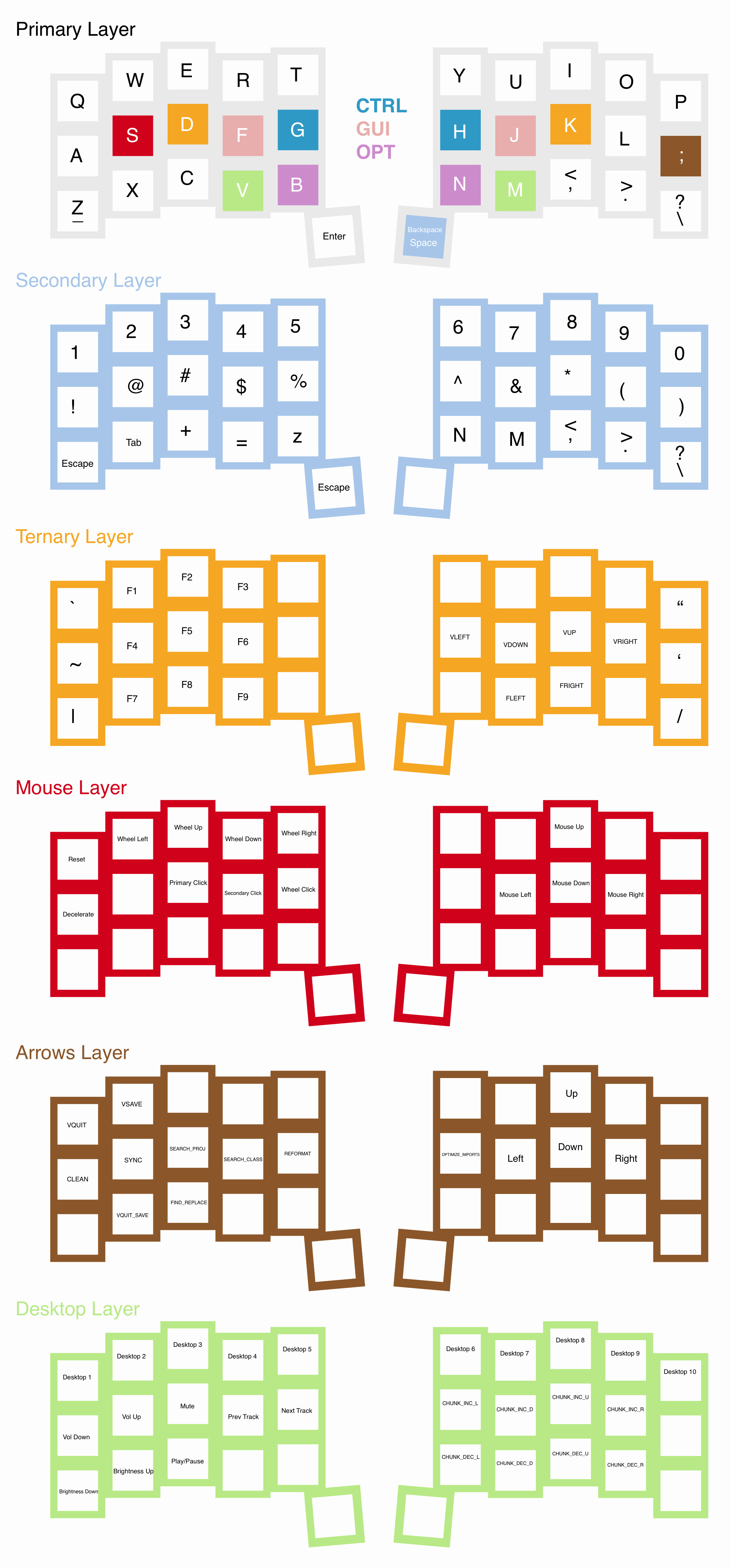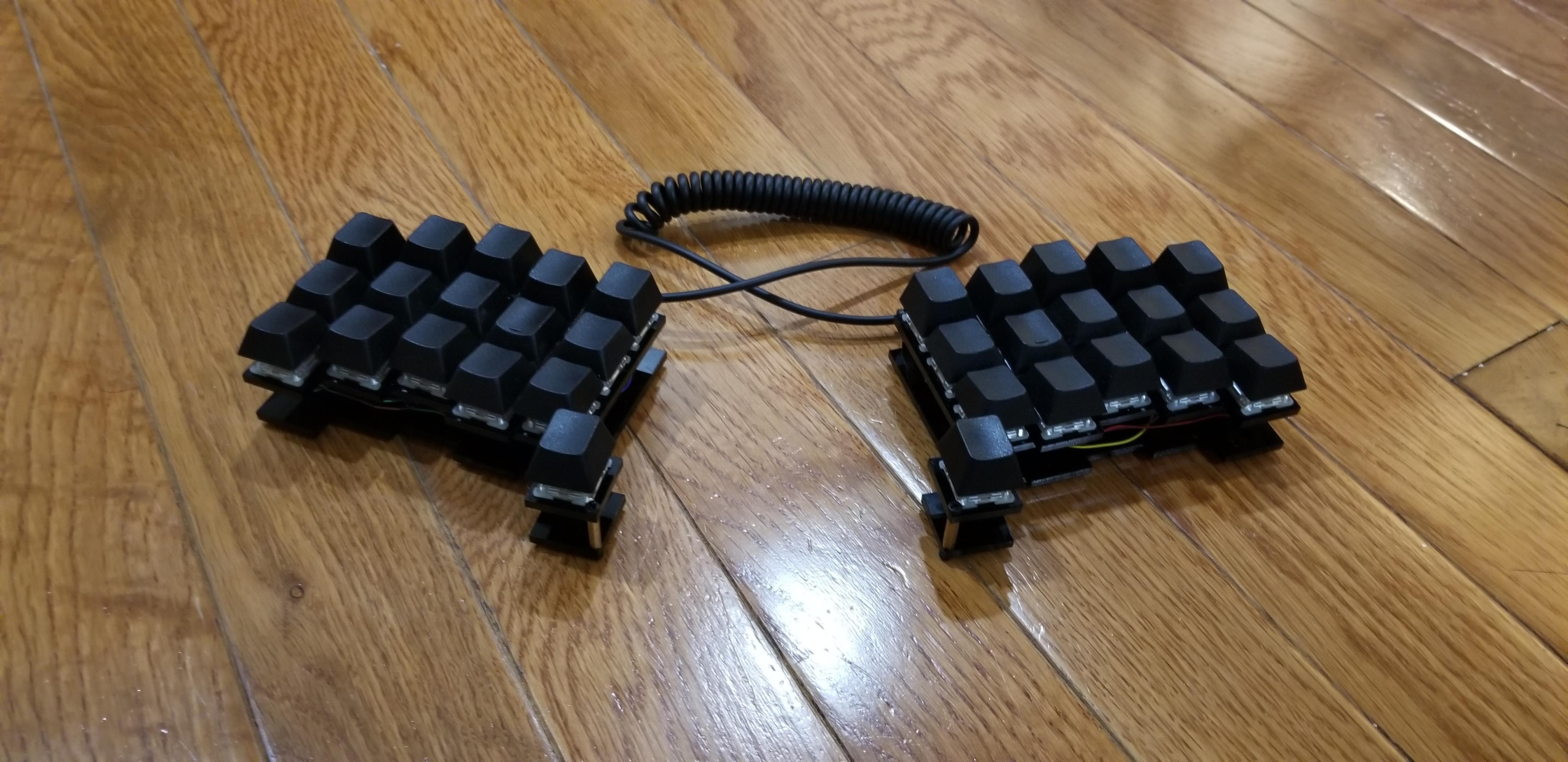Introducing the Micro32
I’ve been piloting a 32-key layout for a year now, primarily for LaTeX and essay writing. Since I’ve graduated and no longer have homework, I now only type for work.
My layout is in reach of all the fingers and I can do any combo or config that I can think of with ease. On 10fastfingers, my WPM is comfortably 144 on the normal test and 110 on the advanced test. On speedcoder.net, my WPM is 64 for the C++ test.

Some notes:
-
I have modifers on the homerow because I will accidentally activate them elsewhere from lagging my fingers during fast typing.
-
My modifiers form symmetries with each other on both halves of the layout so that I can always form a combo.
-
I have all my macros and layouts implemented via QMK. You probably get the point about how many combos you can form with just 32 keys so I won’t be pedantic with the math here.
Meanwhile, I’ve handwired a prototype as shown below:

The halves are flashed with Let’s Split firmware and communicate via I2C over a TRRS cable. The switches are Gateron silent black, have O-Rings, and have Krytox-lubed springs and stems. They’re pretty silent so I like using them at work.
I am prototyping a PCB and some case designs for a new keyboard with my layout – I’m calling it the micro_32 since it’s a tiny-ass keyboard with 32 keys and it coincidentally sounds like a combination of ProMicro and Atmega32u4. Originally I wanted to name it the “Micro32”, but I realized it was already taken and trademarked – hence the casing and added underscore.
Email me if you would like to get your hands on one.
Here is a snapshot of my keymap in QMK: